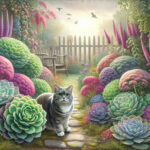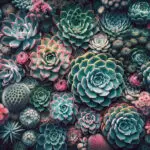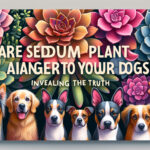Understanding Sedums and Their Appeal
Succulents have been stealing the spotlight in home decor and gardening trends for quite some time now—with sedum plants often leading the charge. These succulents are distinguished by their hardiness and the variety they offer to both indoor and outdoor spaces. Whether you’re looking to create a lush, green roof garden or simply want a low-maintenance windowsill companion, sedums provide an array of options to suit any plant lover’s needs.
One stroll through a well-tended garden highlights sedums’ versatility as they blanket the ground in a carpet of vibrant green or present themselves as starry blooms perched atop leafy stems. It’s no surprise they are often the top pick for adding texture and color to a rock garden or transforming a barren backyard into a thriving habitat for pollinators.
Varieties range from the creeping “Dragon’s Blood” with its fiery foliage to the upright “Autumn Joy” sedum, known for its handsome flower heads that metamorphose from pink to a deep russet as summer gives way to fall. Sedums are not just a feast for the eyes; they are also remarkably tolerant of neglect and can persevere through challenging conditions where other plants might wither and falter. This resilience makes them a perfect fit for the busy or beginner gardener who yearns for greenery without the toil.
Imagine the delight of watching your sedums thrive with scant attention—a quick watering here, an infrequent pruning there. Indeed, mastering sedum care can lead any fledgling green thumb to a lush garden paradise. The allure of these tough yet beautiful plants continues to grow as more people seek sustainable and drought-resistant gardening solutions that offer both aesthetic appeal and practical benefits.
Enough cannot be said about sedums’ ability to captivate and charm. They are the unspoken heroes of the plant world, often overlooked but always steadfast in their quiet beauty. It’s not just the professional gardeners who rave about them; even those with a casual interest in plants have stumbled upon the sedum’s allure, often by happy accident, and found themselves entranced by the toughness and elegance of these botanical wonders.
Let’s delve deeper into sedums with this video showcasing their use in gardens:
The Cat and Sedum Conundrum: A Closer Look
Picture this: a vivid green garden with a tapestry of sedums, each leaf plump and glistening under the sun. Now enter an inquisitive cat, eyes wide with instinctive curiosity, pawing and sniffing around this lush playground. It’s a peaceful scene, right? But here’s the rub – could these succulent plants, known as sedums, actually pose a threat to our purring pals?
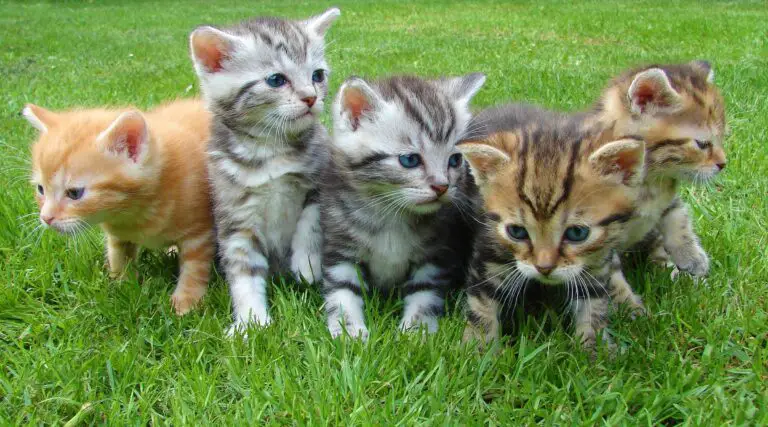
As cat owners, our whiskered family members are more than just pets; they’re integral parts of our lives, each with their unique brand of mischief and love. We’ve all seen how cats have a penchant for grazing on grass and plants, often as a way to aid digestion or simply out of curiosity. But not all plants are safe for our feline friends, and that’s where our story with sedums begins.
While many sedums are not considered highly toxic to cats, there are species such as ‘Dragon’s blood’ (Sedum spurium) that can lead to mild gastrointestinal upset if ingested. Real-life examples aren’t hard to come by in the cat-loving community. Take the case of Whiskers, who found himself with a nasty case of tummy trouble after a sneaky nibble on a backyard sedum. Or Paws, the adventurous climber who decided that the sedum ‘Autumn Joy’ was her chew toy, resulting in a vet visit.
So, why risk it? While the occasional brush against these plants is unlikely to cause harm, the issue crops up when cats, driven by natural instincts, decide to take a bite. It’s not just about the immediate effects; some sedums can also cause skin irritation upon contact — though cases like this are more about discomfort than danger. Still, it prompts us to ponder: do we really know what’s lurking in our gardens?
To mitigate any potential threats, it is crucial for cat owners to become plant detectives of sorts. Knowing which sedum species populate your garden and understanding their effects on cats is the first step to ensuring a safe environment for your four-legged investigators. The next step is either to choose cat-friendly flora or to position possibly harmful plants out of paws’ reach. After all, it’s better to be safe than sorry when it comes to the well-being of our feline sidekicks.
“`html
Deciphering Toxicity: How Sedums Affect Cats
When it comes to our furry friends, we all want them to be safe and healthy—especially when they have the run of the home, including our collection of beloved houseplants. Sedums, those charming and hardy succulents, may catch the eye of a curious cat, but the question stands: are they safe? Today, let’s dig into the nitty-gritty of sedums and their potential effects on cats.
Sedums, also known as ‘stonecrop,’ have a wide variety of species, each with its own unique chemical makeup. While these plants are loved for their drought resistance and their ability to thrive in challenging environments, these same survival tactics can pose a risk to our feline friends. Compounds that deter pests and survive tough conditions might be mildly toxic when nibbled on by a cat.
Though the internet is littered with contradicting information regarding the toxicity of sedums to cats, scientific research provides a more definitive answer. Studies indicate that some species of sedum can contain saponins and other compounds that, while relatively benign to humans, can cause gastrointestinal upset in cats. Symptoms may include vomiting, diarrhea, or lethargy if they ingest part of the plant. For a comprehensive list of plants and their level of toxicity to pets, the ASPCA Animal Poison Control is an excellent resource with veterinary-backed insights.
Let’s think about Oliver, a feisty tabby with a penchant for gardening – or rather, undoing the gardening his owner so lovingly tends to. After a sneaky munching session amongst the sedums, Oliver may experience some discomfort. It’s important for pet owners to monitor such signs and reach out to a veterinarian if they suspect any issues. Even plants labeled as non-toxic can produce a reaction simply because they are not a usual part of a cat’s diet.
By understanding the specific elements in sedums that can affect cats, we can create a safer environment for our pets. Awareness and precaution are key when incorporating these beautiful plants into a home shared with animals. Always conduct thorough research or speak to a professional before introducing new plants to your feline-inhabited home—after all, a safe pet is a happy pet!
“`
Signs of Trouble: Recognizing Sedum Toxicity in Cats
If you share your heart and home with a purring friend, it’s crucial to keep their environment safe, which includes being mindful of the plants you adorn your space with. While sedums are praised for their hardiness and ease of care, it’s imperative to ask, are sedums toxic to cats? To ensure you’re equipped with the right knowledge, let’s delve into the symptoms that may signal your cat has crossed paths with a sedum they shouldn’t have nibbled on.
Your feline’s curiosity can sometimes lead them into trouble, especially when it comes to plants like sedums. Although admired for their succulent leaves and robust growth, sedums can be mischievous foes for our whiskered companions. Immediate recognition of toxicity symptoms is the first step in prevention and protection.
Imagine a typical Sunday when you find your kitty acting strangely after a stroll through your garden—your usually energetic ball of fur might appear sluggish, or worse, they could be experiencing gastrointestinal upset. Situations like this underscore the importance of recognizing symptoms, such as vomiting, diarrhea, drooling, or changes in appetite, which may hint at an encounter with a sedum’s toxic embrace.
As a diligent pet parent, being observant can make all the difference. An obvious sign is witnessing your cat chewing on the plant—ingestion is where trouble brews. However, symptoms don’t always shout for attention; they might whisper through subtle changes like lethargy or hiding behavior. This is when you must spring into action—an immediate visit to a trusted veterinarian is crucial. Learn more about how to react in case of emergency pet care scenarios.
Every cat lover should be aware of the potential risks lurking behind the tender façade of their luscious sedum plants. Ensuring the well-being of your feline friend may require removing or fencing off these silent green sentinels. After all, the last thing we want is for our kitties to be toying with danger.
Cats are family, and keeping them safe is always a top priority—alongside lavishing them with cuddles, of course. Stay aware, stay prepared, and you’ll be ensuring that your furry family member has many more joyful days ahead, free from the risks hidden within the succulent leaves of sedums.
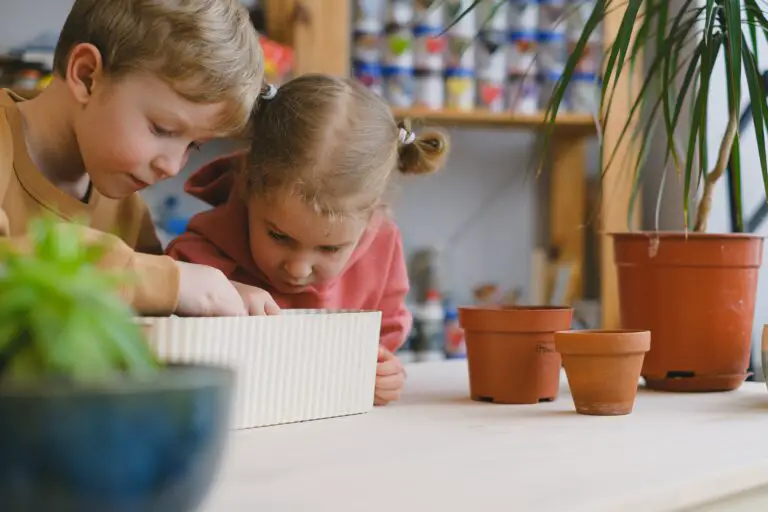
While certain plants can be harmful, thorough research and precaution can ensure your curious cats can live harmoniously among your beloved botanic collection. For more detailed information regarding sedum and its effects on your four-legged friend, you might want to explore this resource for some peace of mind.
Veterinary Verdict: Professional Opinions on Sedum and Cats
There’s been a growing buzz among pet owners about the safety of sedums, those hardy, low-maintenance plants that seem to thrive just about anywhere. But the million-dollar question that strikes the minds of cat owners is: “Are these succulents safe for my whiskered wanderers?” Well, let’s dive into the greenery and unearth what the professionals have to say.
First off, it’s crucial to know that though sedums are generally non-toxic to cats, each cat’s reaction to ingesting plant material can be as unique as their personalities. Veterinarians often see our feline friends come in with upset tummies after nibbling on these succulents. Some may experience mild symptoms like drooling or vomiting. However, in the vast botanical family that sedums belong to, there are a few outliers that can be more problematic, so keeping a keen eye on our pets’ plant munching habits is always wise.
When it comes to treatment, time is of the essence. Experts stress the importance of swift action if you suspect your cat has munched on more than their fair share of your garden sedums. Treatment typically involves symptomatic support, ensuring that our feline friends stay hydrated and comfortable while their bodies process the plant materials. More severe cases may call for a visit to the veterinary clinic for professional oversight and care.
Now, prevention is another patch of the garden, and it’s always the safer bet. It’s recommended to strategically place sedums out of paw’s reach or opt for cat-friendly greenery instead. For those who still want to flaunt their sedum collection, creating physical barriers or offering alternative plants for cats to chew on can help deter them from the less friendly flora.
Wonder if a splash of green in your home is playing it safe around your pawsome pals? There are plenty of pet-friendly plant options out there. Check out our insights into the safety of jade plants, which can be a chic and secure addition to any pet owners’ plant collection.
To sum it up, while sedums may not be the flora of nightmares for our feline buddies, some caution coupled with a little bit of green knowledge can go a long way in keeping our cat compadres from unnecessary vet visits. So, pot carefully, plant lovers!
And speaking of knowing your greens, get the scoop straight from the horse’s mouth—err, the vet’s mouth—with this informative clip:
Gardening with pets doesn’t have to be a high-stakes venture. With the right precautions and informed choices, your beloved feline and your passion for plants can coexist in perfect harmony. So, keep those green thumbs up and those whiskered noses safe!
Safety First: Preventive Measures to Protect Cats from Sedums
Keeping our feline friends safe from the potential risks of sedums starts with thoughtful plant placement. Placing sedums out of paw-reach is crucial. Picture this: a high shelf where sunbeams can dance on the succulent leaves but Felix the cat can’t quite make the soaring leap. It’s like creating a mini rooftop garden away from those curious kitty climbers.
Next, cat deterrents can be a gardener’s best friend, almost as much as cats are to humans. Consider natural deterrents such as citrus peels scattered around the plants or motion-activated sprays that whoosh a gentle mist when Mr. Whiskers gets too close for comfort. Imagine a tiny sprinkler system, just for Kitty—minus the surprise of a cold shower, of course.
Lastly, regular monitoring of your pets’ interaction with plants can’t be overstated. It’s like playing detective in your own garden; keep an eye out for nibbled leaves or paw prints in the soil. Your vigilance ensures that the plant-serenity of your home remains undisturbed, and your pet’s health unharmed.
For those interested in creating a pet-safe gardening space, incorporating sedums while ensuring the safety of your cats, take a peek at this informative video:
Remember, these steps aren’t just recommendations; they are the everyday habits of responsible pet owners who also cherish their green-thumb activities. Keeping sedums and cats in harmony is a balancing act, but with these simple measures, you can create a living space that respects and protects all members of your family, both human and feline.
Succulent Substitutions: Safe Alternatives to Sedums
As a cat lover and plant enthusiast, striking a balance between your decorative plants and the safety of your whiskered companions can often be a challenge. Sedums, while alluring with their robust, drought-resistant nature, unfortunately, fall into the category of plants that pose a potential risk to our feline friends. Fear not, for we have a plethora of paw-friendly succulents that can green up your space without the worry!
Let’s dive into the world of cat-safe succulents that will keep your purring pals healthy and your living space vibrant. Picture this: Your curious cat, Mittens, is now free to sniff around that exquisite, plump-leafed Echeveria without any trips to the vet. Transcend the ordinary and transform your home into a safe, lush sanctuary for your inquisitive little quadruped.
Echeveria: The Safe, Plump-leafed Marvel
The Echeveria family is not only non-toxic but also offers a plethora of shapes and colors to captivate and harmonize with any interior décor. These succulents are as safe as they are stunning, with varieties like ‘Perle Von Nürnberg’ boasting a romantic blush and ‘Blue Prince’ emanating regal, blue-gray tones. Imagine Mittens prowling around these innocent beauties with no harm in sight.
Haworthias: The Striped, Windowed Wonders
Haworthias muster a strong following for their enchanting zebra-striped patterns and translucent, windowed leaves. With an affinity for shady spots, they are magnificent miniatures for cat-safe displays. Envision these striped gems nestled on a bookshelf away from direct sunlight, adding a splash of greenery and intrigue, while Mittens marvels at their intricate designs from the comfort of the couch.
Sempervivum: The Hardy Rosettes
Also known as “hen and chicks,” the Sempervivum varieties are hardy, immune to kitty’s antics. Their rosette shapes and ever-changing hues offer year-round visual delight and, importantly, peace of mind. See them thrive on your patio or balcony, basking in the sun, utterly unfazed by Mittens’ playful pounces.
To complement this palette of non-toxic greenery, we’ve unearthed a helpful guide you can watch right here:
Feel like a green-thumbed superhero as you create a botanical oasis that respects the delicate balance of cat coziness and plant prowess. Just imagine Mittens, lounging in the shade of your bountiful, bloom-filled abode, every plant a testament to your thoughtful choice. And as you sip your morning coffee, a sigh of relief pairs with the purr of your four-legged loved one—a purr-fect harmony of flora and fauna, indeed.
Frequently Asked Questions
When it comes to keeping our feline companions healthy and happy, knowing which plants are safe for them to be around is crucial. Sedums, those trendy succulents adorning window sills and patios, can pose a puzzling question for cat owners. Are they friend or foe to the whiskered wonders we cherish? Let’s dig into some common inquiries about these green beauts and their impact on cats.
What should I do if my cat eats a sedum?
If you catch your cat nibbling on a sedum, your first step is to stay calm. Not all sedums are toxic, but it’s better to be cautious. Remove any plant pieces from your cat’s mouth and monitor them closely. If they start to show any signs of discomfort, such as vomiting or lethargy, contact your vet immediately. A quick anecdote: my neighbor’s cat, Whiskers, once had a little feast on a sedum. Thankfully, he was fine after a vet visit, but we now know to keep an eye on him around the garden!
Are all succulents dangerous to cats?
The succulent family is vast, with some being harmless while others can be harmful if ingested by cats. It’s essential to research each plant in your collection. Remember that succulents like aloe vera, although great for human burns, can be toxic to cats. Always vet your veggie pals before bringing them into your cat-dominated domain.
How can I tell if a plant is safe for my cat?
To ensure your greenery is safe for your furry friend, do a bit of homework. There are databases and resources available from organizations such as the ASPCA that list both toxic and non-toxic plants for cats. When in doubt, double-check with these lists or your veterinarian. It’s all about being proactive to avoid any pet-plant mishaps. Also, consider keeping plants out of reach if your cat is known to be a curious nibbler.
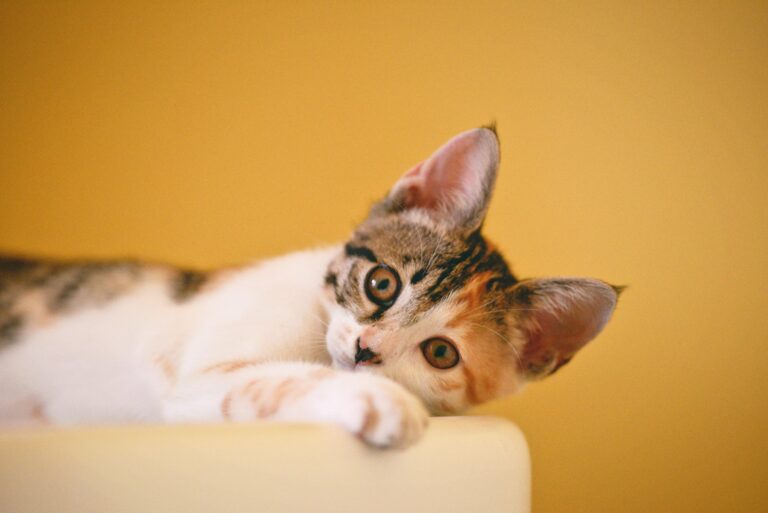
Through intuitive care and a little plant knowledge, you can create a living space that’s both aesthetically pleasing and safe for your cat. Sedums don’t have to be a hidden danger if you’re armed with the right information and a watchful eye. Here’s to hoping your pet and your plants can live together in purrfect harmony!
